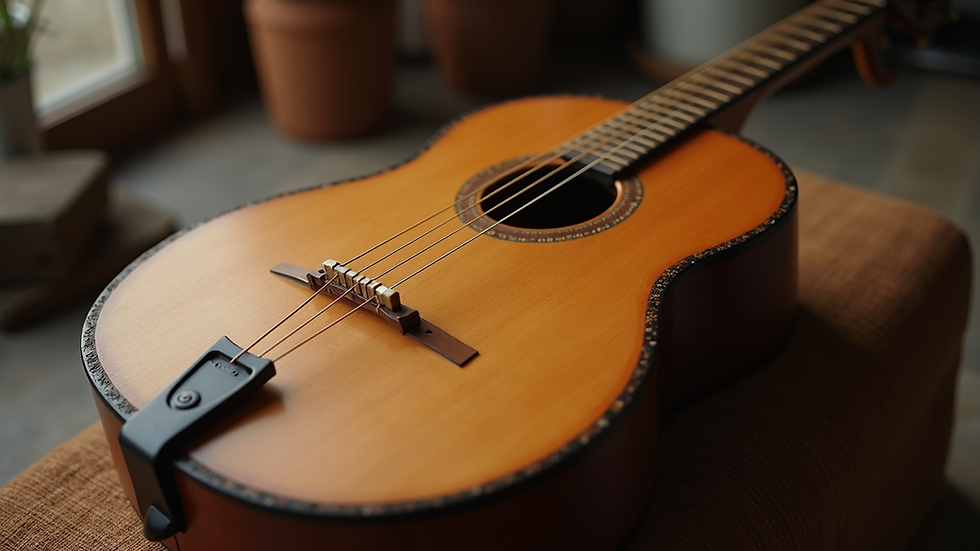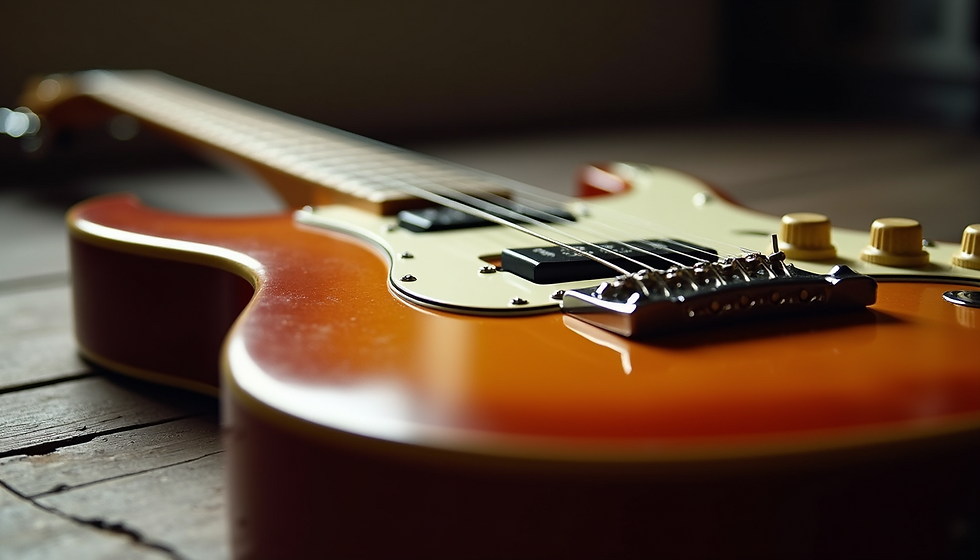The Cultural Legacy and Choice of Banjos
- WoodysMusic
- Sep 12
- 4 min read
The banjo is more than just a musical instrument; it is a symbol of cultural heritage and musical innovation. Its distinctive sound has echoed through centuries, shaping genres and inspiring musicians worldwide. Understanding the cultural legacy and making an informed choice when selecting a banjo can enrich your musical journey. This guide explores the history, cultural significance, and practical tips for choosing the right banjo.
The Rich Cultural Legacy of the Banjo
The banjo has roots that trace back to West Africa, where similar stringed instruments were crafted by various ethnic groups. Enslaved Africans brought these musical traditions to America, where the banjo evolved into the form we recognize today. It became a staple in folk, bluegrass, country, and even jazz music.
The instrument’s cultural significance is profound. It represents resilience, creativity, and the blending of diverse musical traditions. Early banjo players used homemade instruments, often crafted from gourds and animal skins. Over time, the banjo became a symbol of American folk culture, embraced by communities across the country.
In the 20th century, the banjo gained mainstream popularity through artists like Earl Scruggs and Pete Seeger, who showcased its versatility. Today, the banjo continues to be a bridge between past and present, connecting generations through its unique sound.

Banjo Selection Guide: Choosing the Right Instrument
Selecting a banjo can be overwhelming due to the variety of styles, materials, and features available. Here are some practical tips to help you make the best choice:
1. Determine Your Playing Style
Bluegrass: Look for a resonator banjo, which has a closed back to project sound forward. These banjos typically have a brighter, louder tone.
Clawhammer or Old-Time: Open-back banjos are preferred for their softer, mellower sound.
Jazz or Folk: You might consider a banjo with a shorter neck or specialized tone rings for a unique sound.
2. Consider the Number of Strings
5-string banjos are the most common and versatile, suitable for bluegrass and folk.
4-string banjos (tenor or plectrum) are often used in jazz and Irish traditional music.
6-string banjos are tuned like guitars and are great for guitar players transitioning to banjo.
3. Material and Build Quality
Wood: Maple, mahogany, and walnut are popular choices. Maple offers bright tones, while mahogany provides warmth.
Hardware: Look for durable metal parts and quality tuning pegs to ensure stability.
Head Material: Synthetic heads are common and weather-resistant, while natural skin heads offer traditional tone but require more care.
4. Budget and Brand Reputation
Entry-level banjos can be affordable but may lack the tonal richness of higher-end models.
Established brands often provide better craftsmanship and customer support.
Consider buying from reputable dealers or stores that offer warranties and return policies.
5. Try Before You Buy
If possible, play different banjos to feel the neck, test the sound, and assess comfort. Each banjo has a unique personality, and personal preference plays a significant role.

What is Another Name for a Banjo?
The banjo has been known by various names throughout history, reflecting its diverse cultural influences. Some alternative names include:
Banjolele: A hybrid between a banjo and a ukulele, popular in the early 20th century.
Banjar: An older term used in some regions, especially in the southern United States.
Tambo: A colloquial term sometimes used in folk music circles.
Gourd banjo: Refers to early banjos made with a gourd body.
These names highlight the instrument’s evolution and the many forms it has taken. Understanding these terms can deepen appreciation for the banjo’s rich history and its role in different musical traditions.

Maintaining Your Banjo for Longevity
Proper care is essential to keep your banjo sounding great and lasting for years. Here are some maintenance tips:
Regular Cleaning: Wipe down the strings, neck, and body after playing to remove oils and dirt.
String Replacement: Change strings regularly to maintain tone quality. Frequency depends on playing time.
Head Tension: Check and adjust the tension of the banjo head to ensure optimal sound.
Storage: Keep your banjo in a case when not in use, away from extreme temperatures and humidity.
Professional Setup: Occasionally, have a luthier inspect and adjust your banjo for playability and sound.
By following these steps, you can preserve the instrument’s integrity and enjoy its unique sound for many years.
Embracing the Banjo’s Legacy in Your Music
Choosing a banjo is not just about picking an instrument; it is about connecting with a vibrant cultural legacy. Whether you are a beginner or an experienced player, understanding the history and characteristics of the banjo enriches your musical expression.
Explore different styles, experiment with sounds, and let the banjo’s distinctive voice inspire your creativity. With the right instrument and care, you can carry forward the tradition and add your own chapter to the banjo’s enduring story.



